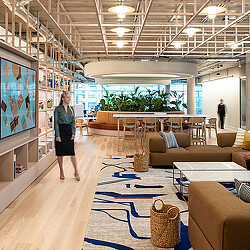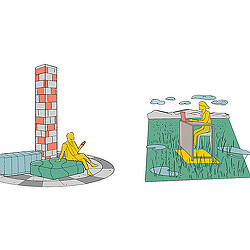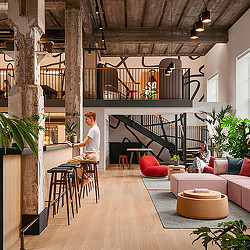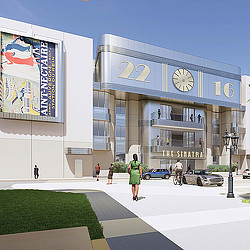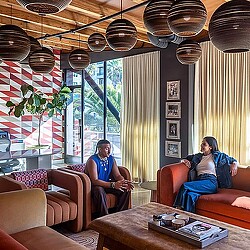Live Event Amenities: The Next Frontier for Creative Workplaces
Companies are investing in live event-ready amenity spaces to attract talent, fuel creative work, and create buzz in the workplace.
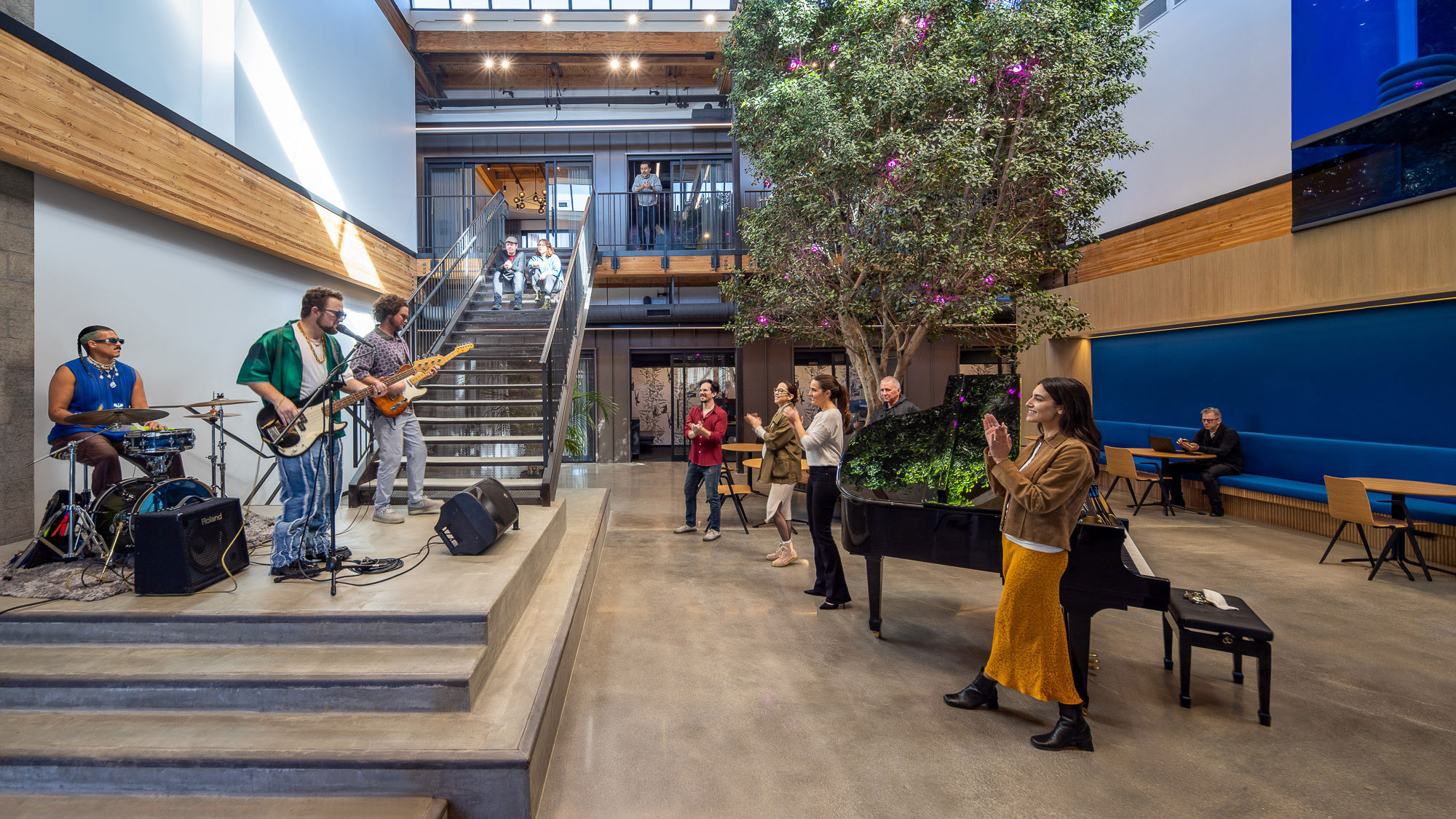
The next great concert or premiere you go to may be at work.
Recognizing people’s desire for immersive, in-person experiences, media and creative companies are investing in live event-ready amenity spaces in the workplace — a strategy that not only attracts talent and fuels creative work but also creates FOMO-inspiring buzz in the workplace.
Whether it’s taking advantage of an underutilized space for a strategic intervention, or incorporating into a larger renovation or facility planning, creative companies are infusing their workplaces with spaces that create opportunities for talent to have one-of-a-kind live experiences for their creative communities to rejuvenate the workplace experience and grow their businesses.
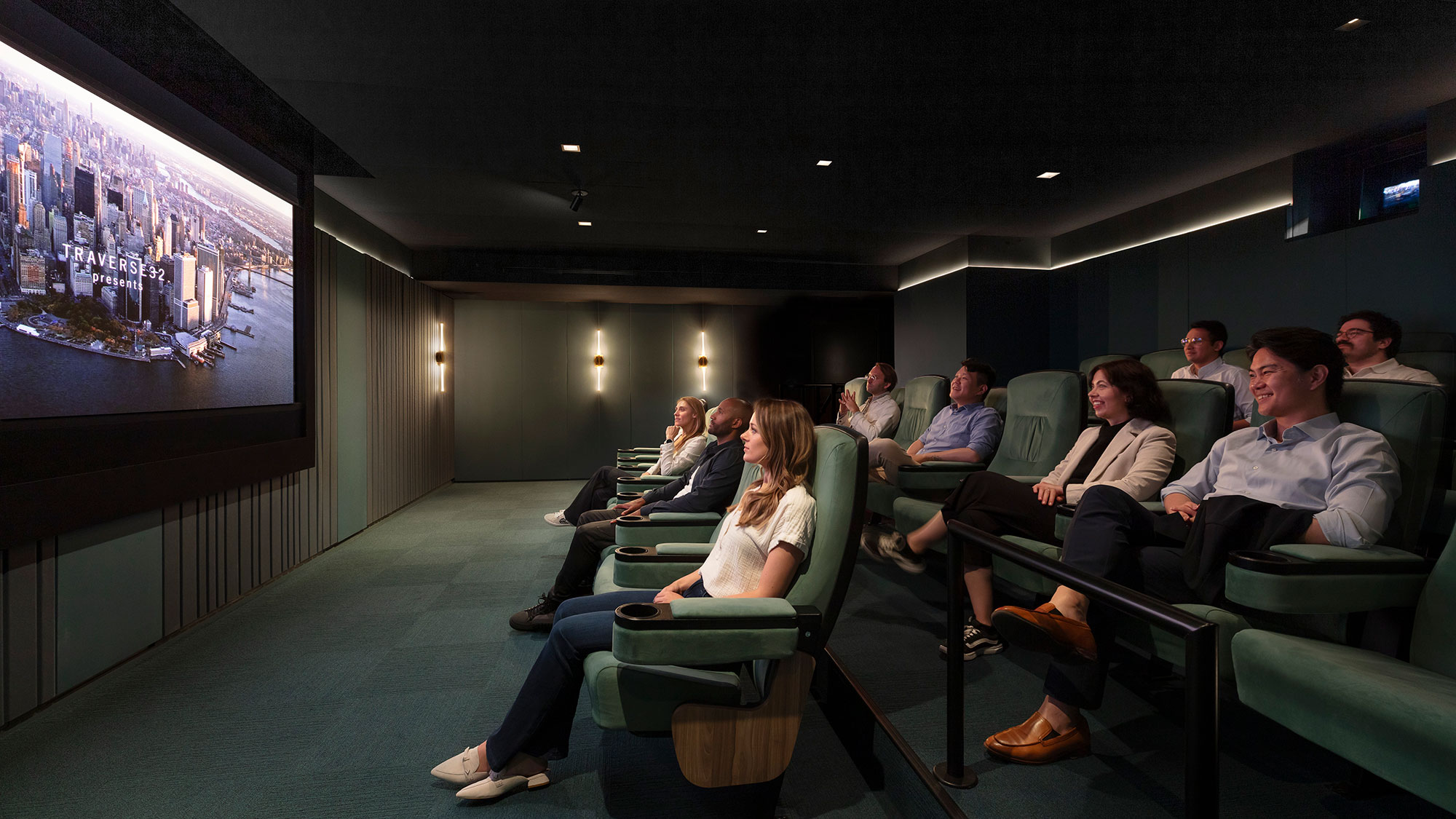
Movie magic
For Traverse32’s (a division of IPG/Mediabrands) recently completed workspace in Midtown Manhattan, capturing the magic of movies in their workplace was essential to their mission — bridging the gap between advertising and film production.
For their new workplace and content studio, the company made a key investment in creating a one-of-a-kind 25-seat, professional grade screening room and pre-function space to host top directors and talent. The screening room resembles a theater more than an office, with a projection screen and theatrical lighting, Dolby Atmos surround sound, VIP theater grade seats, and theatrical details like ‘On Air’ lights and the client’s movie posters and awards.
A gallery, café, and a reconfigurable open lounge compliment the theater and allow for the space to be used for a variety of events, including Q&A with directors, industry screenings, as well as office events like streaming the Oscars, or internal presentations. With the historic Gimbel’s Bridge over 33rd street as the backdrop, the Art Deco inspired design feels more like an old Hollywood movie house than a midtown Manhattan office space. According to Mediabrands, it’s the one of their most requested spaces in their headquarters at the Mall of Manhattan.
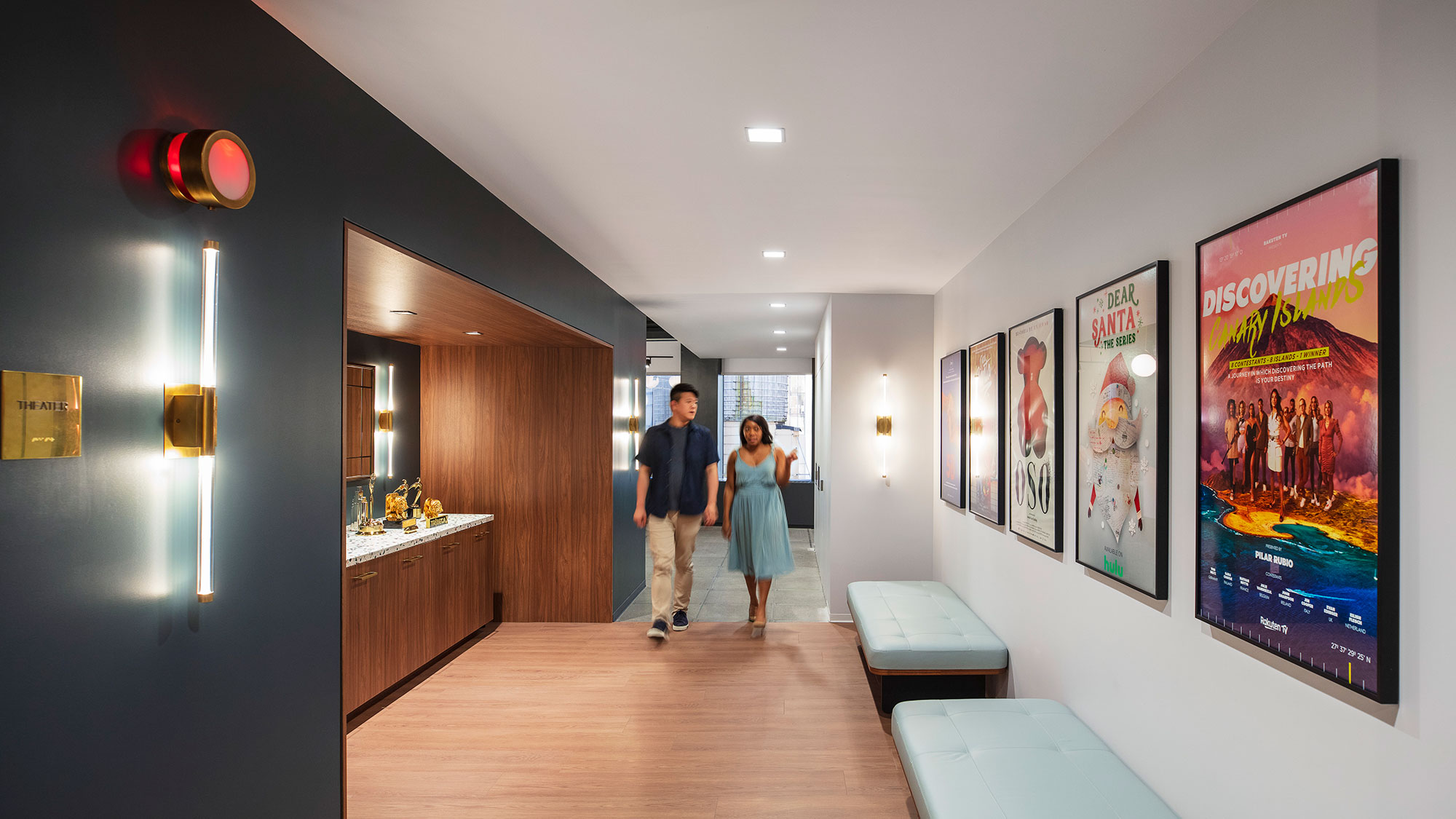
Previously, the 10,000-square-foot space was underutilized as a media device lab adjacent to a larger open work area. We strategically designed the space to incorporate the theater, while reusing as much of the existing space and furnishings as possible. This fiscally and sustainability-conscious approach allowed the team to create a top-grade theatrical experience, with design touches that make the entire space feel unique without breaking the budget. This low-footprint, high-impact design is a strategic way to renovate existing spaces.
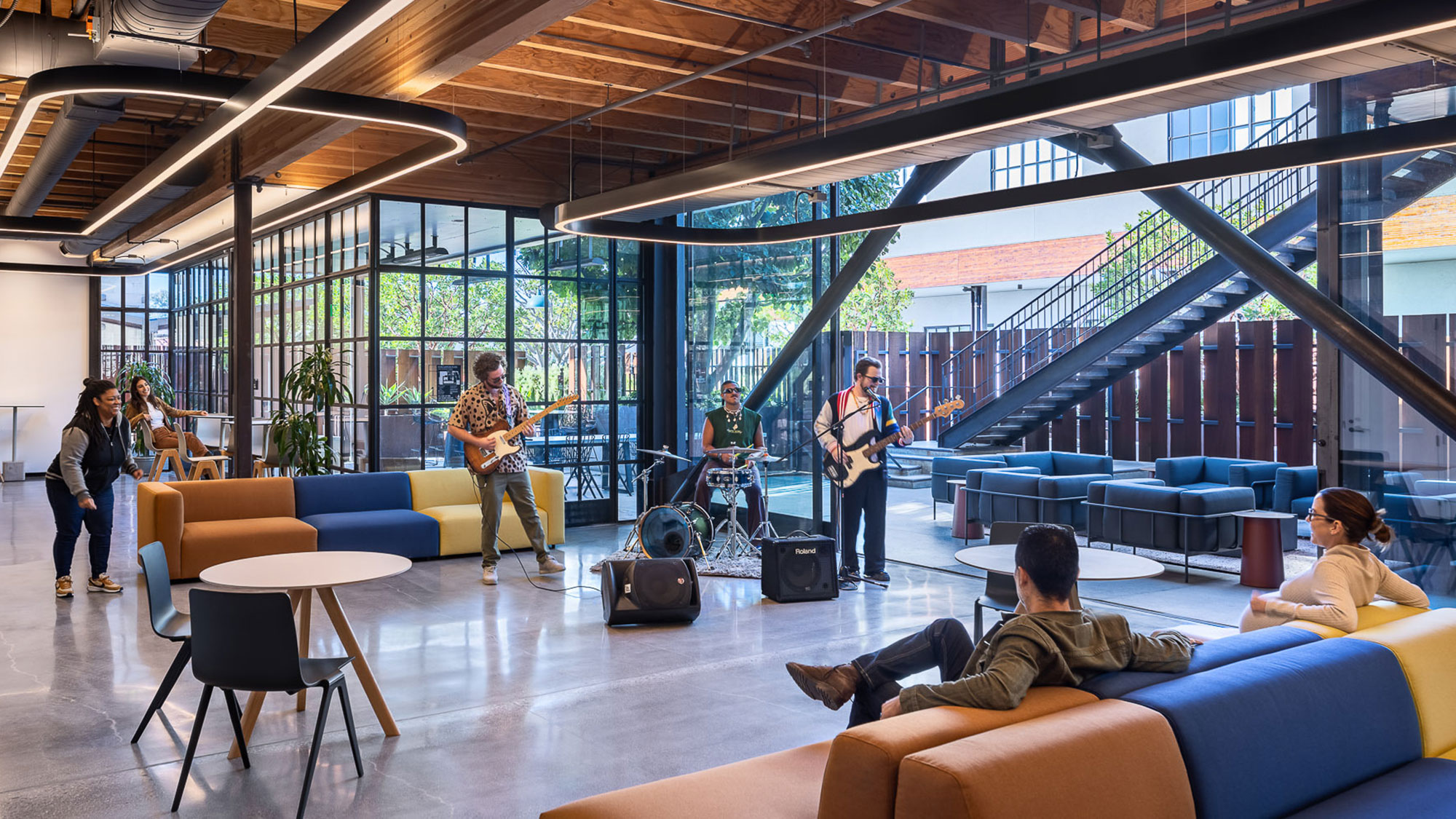
Backstage pass
For companies looking at larger renovations or new facilities, investing in live audience spaces can be a way to create a workplace experience that feel like a backstage pass.
For Universal Music Publishing Group’s workplace in Santa Monica, California, the company celebrates music as central to their culture, while still saving on their overall footprint. The design of the space nods to the local climate’s fresh air and sunshine, but the celebration of live music is unmissable in the performance spaces scattered throughout the facility encouraging impromptu or planned performances by visiting artists or even employees for a company event or happy hour.
It’s an unparalleled way to connect the backstage excitement of a live band to the everyday work experience. Only at a workplace where music is made can you get a glimpse of an A-list performer or coworker plugging in an amp.
By colocating these spaces with open shared spaces, it allows people to join a live impromptu or unplanned moment. For UMPG, this approach embraces a culture of “work where you like, how you like,” while giving its sizable remote work population an only-at-the-office reason to come in: to catch a set, no ticket or app required.
Rejuvenate culture with purposeful connections to creative work
Live event spaces are an impactful design tool to create unique one-of-a-kind experiences in the workplace. As creative companies continue to evolve in a shifting media landscape, connecting their talent to greater purpose through live experiences in their workplace is a way to rejuvenate culture, and elevate their brands.
For media inquiries, email .


